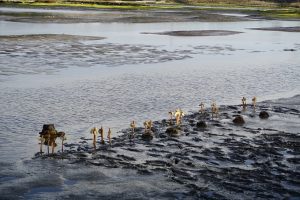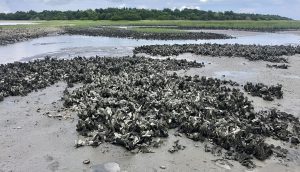Changes in land-use coupled with sea-level rise contribute to changes in marsh habitat. Living shorelines, oyster restoration, and marsh buffer policies can help to mitigate any negative changes in marsh habitat. Two ecosystem engineers – oysters and Spartina cordgrass – interact at the marsh edge to provide extensive ecosystem services such as shoreline stabilization. To inform resource management, it is important to understand how interactions between oyster and Spartina change and evolve over time. Through Georgia Sea Grant-funded research, scientists at the University of Georgia are examining the relationship and mechanism of interaction between Spartina and oysters. Research results demonstrate that Spartina and oysters interact with each other through heat stress reduction and bank stabilization. Further, based on the width of the adjacent water body, the shape and size of oyster reefs and their distance from Spartina changes. Scientists have found both estuarine and reef scale patterns in oyster and Spartina marsh grass distribution. This project will answer key questions expressed by living shoreline stakeholders and will also provide predictions on how species distributions will be affected by sea level rise and climate change. Photo: Keith Kolasa



